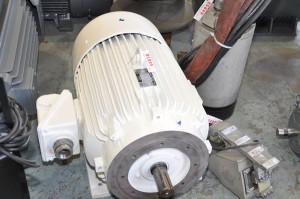 According to an indepth study performed by EASA, rebuild motors showed no significant loss of effiency, in fact, in several cases, the efficency rating improved.
According to an indepth study performed by EASA, rebuild motors showed no significant loss of effiency, in fact, in several cases, the efficency rating improved.
Electric motors are vital components for many industries, large or small. Electric motors account for two thirds of all electricity used in industrial or commercial applications. The energy costs of operating an electric motor surpasses the original cost of the electric motor many times over. It is no wonder that the energy efficiency ratings for electric motors are a common concern. We often get presented with this question from customers that are evaluating the cost/benefit of rebuilding a motor versus buying new.
We hope that the following information will help answer this common question.
In a comprehensive study, EASA released their research finding on the efficiency of rebuilt or repaired electric motors. The study evaluated 22 motors of different types, voltages, and horsepower. These motors were placed into 4 groups:
Group A
- 6 low voltage motors (100-150hp, 75=112kW)
- Rewound Once
- Result: Average efficiency change was -0.4% (Range -0.3 to -0.5%)
Group B
- 10 Low voltage motors (60-200hp, 45-150 kW)
- Rewound once
- Result: Average efficiency change was -0.03% (Range +0.2 to -0.2%)
Group C
- 5 low voltage motors (100-200hp, 75-150kW)
- Rewound two or three times
- Result: Average efficiency change was 0.1% (Range +0.7 to -0.6%)
Group D
- 1 Medium voltage motor (300hp, 225kW)
- Formed stator coils rewounce once.
- Result: Average efficiency change was -0.2%
All tests were performed with approved industry practices. These results are clear, repaired electric motors that are properly maintained maintain energy efficiency.
Repair an electric motor, or replace it?
Our customers know that repairing an electric motor can often time be more affordable that buying new, however we realize that there are many other factors to consider.
Contact us today, and the professionals at Priest Electric will work with you to evaluate the option that will best suit your specific needs and requirements.

Leave A Comment